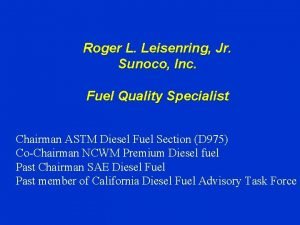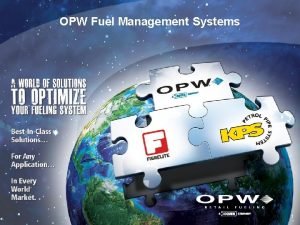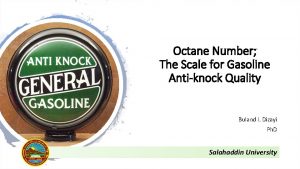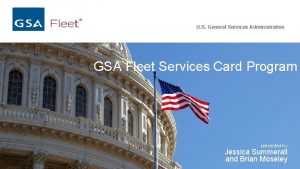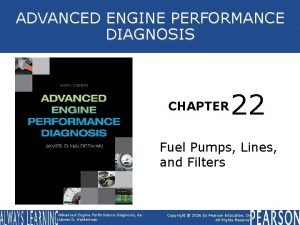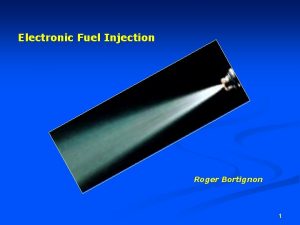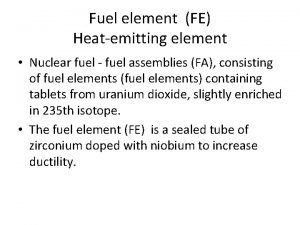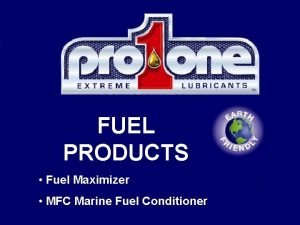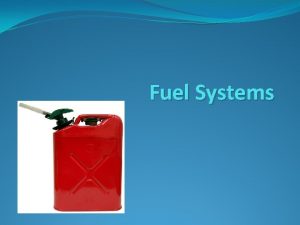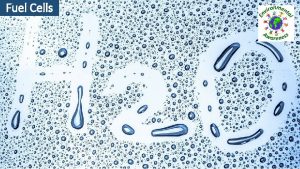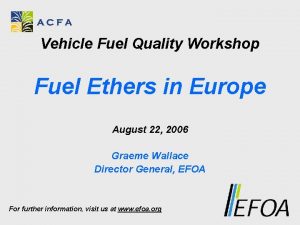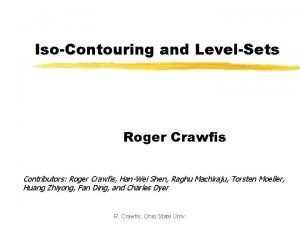Roger L Leisenring Jr Sunoco Inc Fuel Quality















- Slides: 15

Roger L. Leisenring, Jr. Sunoco, Inc. Fuel Quality Specialist Chairman ASTM Diesel Fuel Section (D 975) Co-Chairman NCWM Premium Diesel fuel Past Chairman SAE Diesel Fuel Past member of California Diesel Fuel Advisory Task Force

October 1, 1993 Introduction of Low Sulfur Diesel Fuel u Governor Pete Wilson California created Diesel Fuel Advisory Committee u Investigated Lubricity u Investigated reported seal leakage

Seal Leakage Occurred Because u u u Reduced elasticity due to age, old Typically high mileage, or hours Exposure to high temperature Thermal cycle Reduced swelling (or shrinkage)



Seal Leakage Population Fuel related problems affected a relatively small percentage of the overall vehicle population; however, the problems are serious for the owners of the vehicles involved Diesel Fuel Task Force 2/9/04

Seal Material Conclusion Fuel system leakage were from seals made of nitrile, or Buna N, rubber. Seals made of fluorocarbon, Viton, did not experience seal failures.

Lubricity Conclusion Lubricity was not the cause of pump leakage. However, a minimum 3000 g SLBOCLE was specified to assure adequate lubricity while the ASTM, ISO, SAE and CEC defined a test and a limit. 2005 update: Effective 1/1/05 ASTM D 975 includes a lubricity specification

Peroxides Oxidation of fuels form peroxides, which can lead to deterioration of seals. An SAE report mentioned this, however, peroxides were low and fuels were not stored very long. Update: ASTM task force is investigating this issue

Why some Aged nitrile seals might be more susceptible because old seals are less pliable and elastic. When new they change shape and fill the cavity maintaining a seal. If the seal is hardened, loss of plasticizers and have “compression set” changes in aromatics of the fuel might have an effect on sealing. Most, if not all manufactures, responded by eliminating nitrile rubber seals and replacing with fluorocarbon seals. Keep in mind. Not all old seals leaked, Southern California had LSD in 1985 with no reported problems. Sweden which had extremely low aromatic fuels did not experience any problems. Therefore, fuel alone was not the cause of leakage.

The Fix for Seal Leakage Replacement of the seals solved the leakage problem in most cases. After 1994 OEMs should have advised existing fleets and implemented design changes for future models. There were repeat failures, but this was tied to improper installation of the seals, and were vehicle repeat compared to component repeat failures.

CA Experiment # 4 Objective: Determine if switching between fuels with different seal swell characteristics could result in leakage. New and used fuel pumps were operated on high and low swell fuels, as determined by new o-ring swell test.

CA Experiment # 4 Outcome: 1. Reconditioned pumps operated on both high and then low swell fuels did not leak on either fuels. 2. 2 out of 12 (16%) in-service pumps leaked when switched from high swell to low swell fuel. 1 was minor which did not lead to formation of fuel droplets.

US Army Kerosene Report u GM 6. 2 & 6. 5 L engines u No excess wear u Hot wear operational problems occurred with some vehicles u In all cases, operational problems were traced back to not implementing factory recommended parts change-over as per service bulletins.

The End
 Sunoco diesel fuel quality
Sunoco diesel fuel quality Feira gas
Feira gas Opw fuel management system
Opw fuel management system Antiknock quality of fuel
Antiknock quality of fuel Define quality assurance in nursing
Define quality assurance in nursing Quality is free: the art of making quality certain
Quality is free: the art of making quality certain Quality control and quality assurance
Quality control and quality assurance Compliance vs quality
Compliance vs quality Old quality vs new quality
Old quality vs new quality Pmp quality management
Pmp quality management Basic quality concepts
Basic quality concepts What are quality standards in project management
What are quality standards in project management Quality gurus and their contribution
Quality gurus and their contribution Fuel assembly
Fuel assembly Wex fleet card driver id
Wex fleet card driver id Roller cell fuel pump
Roller cell fuel pump
